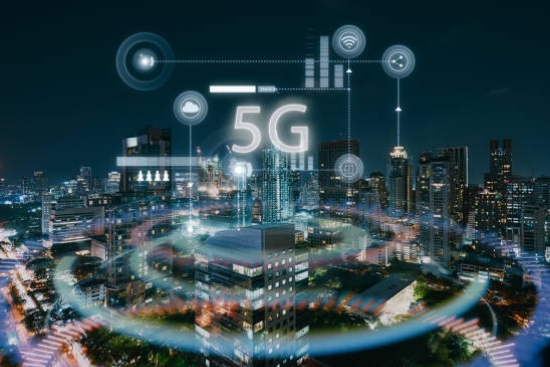
The future of 5G-powered Vehicle-to-Everything (V2X) communication is set to revolutionize transportation by enhancing connectivity, safety, and efficiency on the roads.
As 5G networks continue to evolve and expand, V2X technology will play a pivotal role in shaping the mobility ecosystem. Here’s a look at the potential future developments and impacts of 5G-powered V2X communication:








1. Acceleration of Autonomous Vehicles
Seamless Integration: The advanced capabilities of 5G will accelerate the development and deployment of fully autonomous vehicles. V2X communication will enable these vehicles to interact seamlessly with their environment, other vehicles, and infrastructure, leading to safer and more efficient autonomous driving.
Enhanced Decision-Making: Autonomous vehicles will rely on V2X to make informed decisions based on real-time data from surrounding vehicles and infrastructure, reducing the likelihood of accidents and improving traffic flow.
2. Smart Cities and Connected Infrastructure
Intelligent Traffic Systems: V2X communication will be integral to smart city initiatives, enabling real-time management of traffic lights, road signs, and other infrastructure. This will optimize traffic flow, reduce congestion, and lower emissions in urban areas.
Urban Mobility Solutions: V2X will support the development of new urban mobility solutions, such as smart parking, dynamic lane management, and automated toll collection, improving the efficiency of city transportation systems.
3. Widespread Adoption of Cooperative Driving
Platooning: V2X will facilitate the widespread adoption of vehicle platooning, where groups of vehicles travel in close formation, coordinated through real-time communication. This will improve fuel efficiency, reduce traffic congestion, and increase road capacity.
Cooperative Maneuvering: Vehicles will be able to coordinate complex driving maneuvers, such as lane changes and merging, with minimal human intervention, enhancing safety and reducing the potential for accidents.
4. Enhanced Road Safety
Proactive Hazard Detection: V2X communication will enable vehicles to detect and respond to potential hazards before they become critical, such as detecting an approaching emergency vehicle or a pedestrian in a crosswalk. This proactive approach will significantly improve road safety.
Accident Prevention: By enabling vehicles to share real-time data about their speed, location, and intended actions, V2X will reduce the likelihood of collisions, particularly in complex driving environments like intersections and highways.
5. Integration with AI and Edge Computing
Real-Time Data Processing: The integration of V2X with edge computing and AI will allow for real-time processing of massive amounts of data at the network edge, enabling faster and more accurate decision-making for autonomous and connected vehicles.
Predictive Analytics: AI-powered V2X systems will be able to predict traffic patterns, potential hazards, and vehicle behavior, further enhancing safety and efficiency on the roads.
6. Expansion of V2X Ecosystem
Increased Connectivity: As 5G networks become more widespread, the V2X ecosystem will expand to include a greater variety of connected devices, including bicycles, scooters, drones, and other forms of mobility. This will create a fully integrated transportation network.
Intermodal Transportation: V2X will facilitate the seamless integration of different modes of transportation, such as cars, public transit, and bicycles, allowing for a more cohesive and efficient mobility experience.
7. Challenges and Considerations
Standardization and Interoperability: For V2X to reach its full potential, global standards and protocols must be established to ensure interoperability between different vehicles, infrastructure, and communication systems.
Data Privacy and Security: As V2X communication involves the exchange of sensitive data, robust security measures will be essential to protect against cyber threats and ensure the privacy of users.
Infrastructure Investment: Significant investment in 5G infrastructure and V2X-capable systems will be required to support the widespread adoption of this technology.
8. Economic and Environmental Impact
Cost Reduction: V2X technology has the potential to reduce the costs associated with traffic accidents, fuel consumption, and vehicle maintenance, leading to significant economic benefits.
Environmental Sustainability: By optimizing traffic flow and reducing congestion, V2X can contribute to lower emissions and more sustainable urban environments, supporting global efforts to combat climate change.
9. Global Deployment and Adoption
Scalable Solutions: The future will see scalable V2X solutions being deployed across different regions, with adaptations to local traffic conditions and regulations. Emerging economies may adopt V2X in innovative ways to address specific transportation challenges.
Government and Industry Collaboration: The successful deployment of V2X will require close collaboration between governments, automotive manufacturers, technology providers, and telecom operators to create a cohesive and supportive ecosystem.
Conclusion
The future of 5G-powered V2X communication is promising, with the potential to transform the way we travel, improve road safety, and create smarter, more efficient cities. As 5G networks continue to evolve, V2X technology will become increasingly sophisticated, driving innovation in transportation and beyond. By enabling vehicles to communicate with each other and their surroundings in real time, 5G-powered V2X is set to play a crucial role in the next generation of mobility solutions, leading to safer roads, smarter cities, and a more connected world.

Leave a Reply